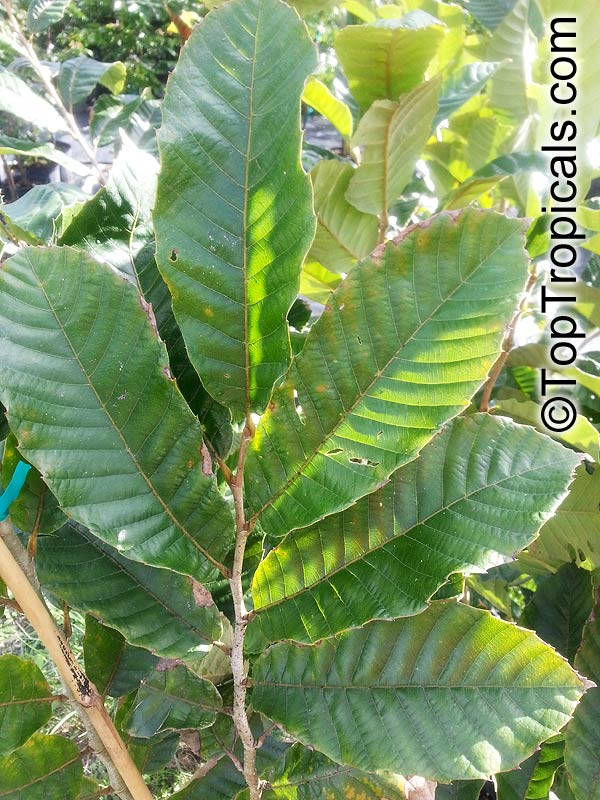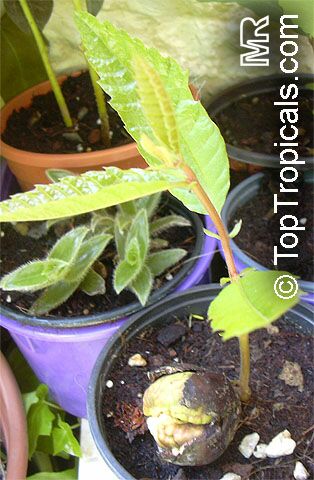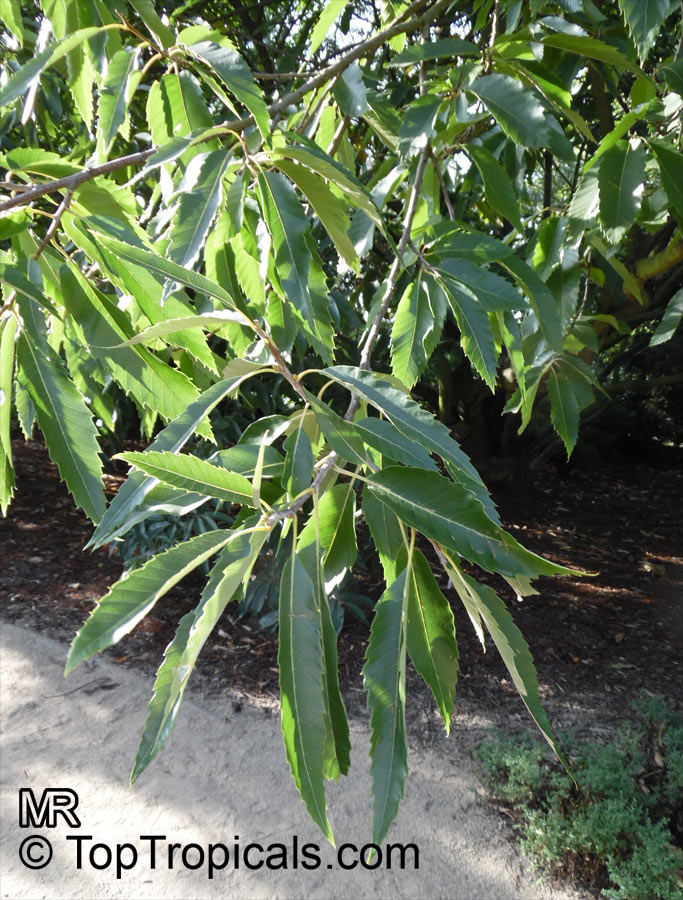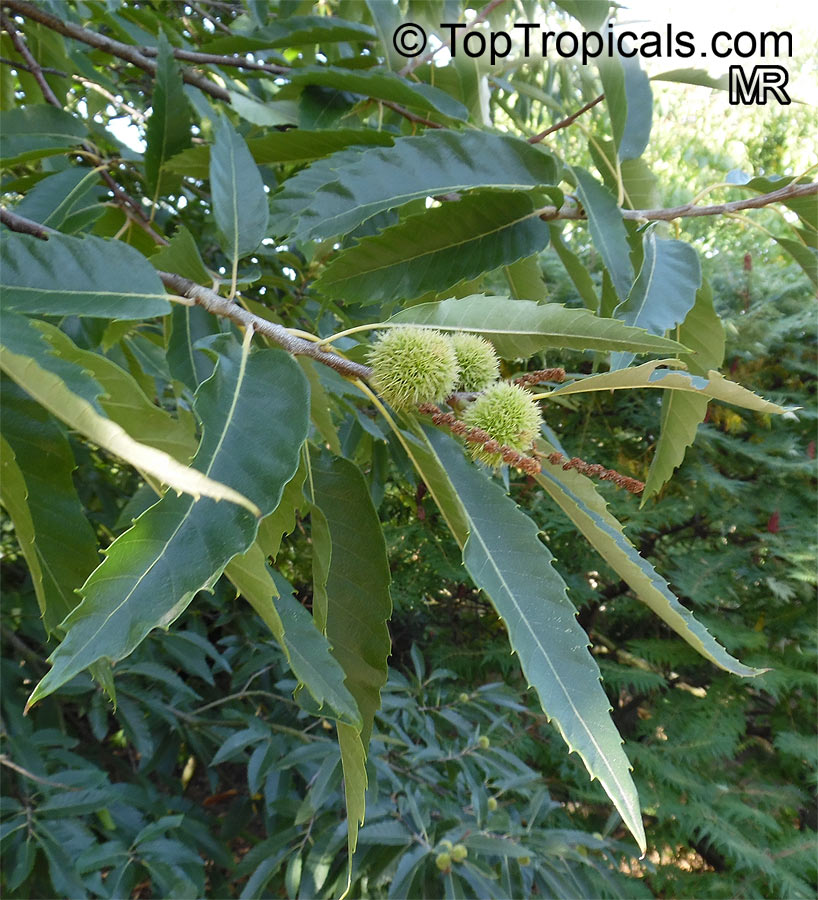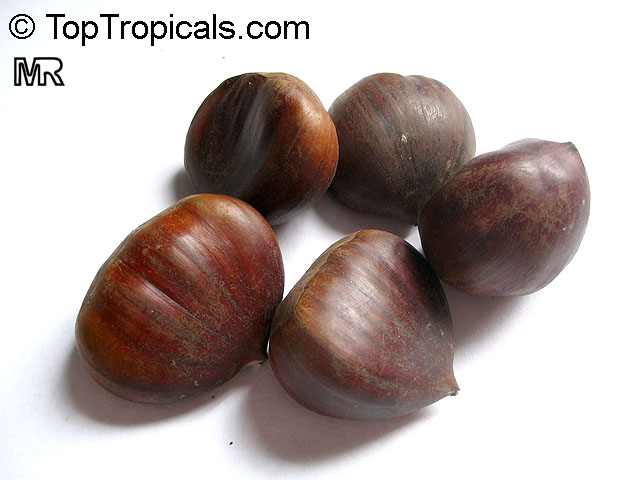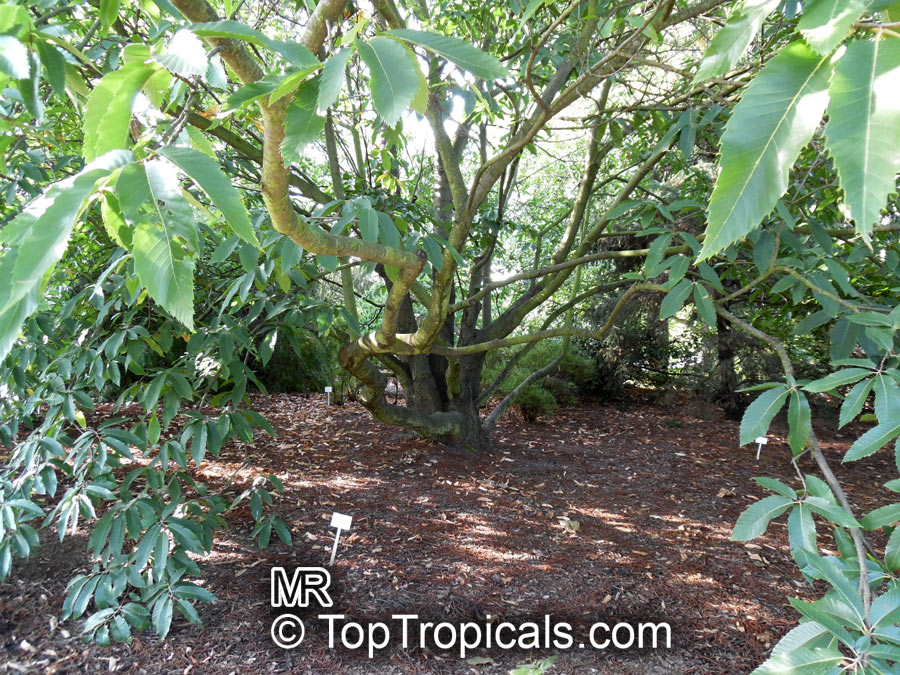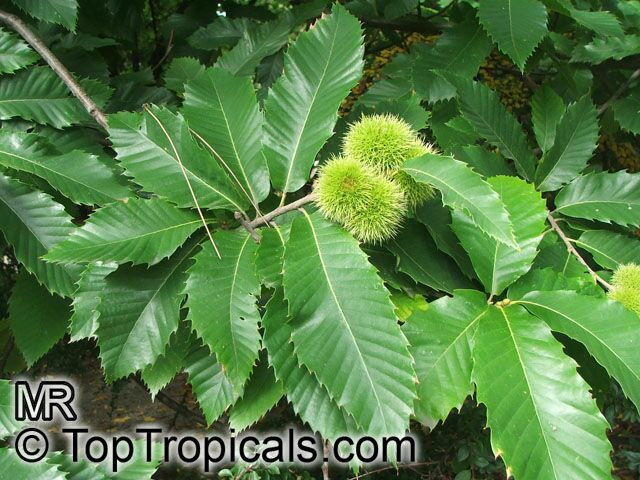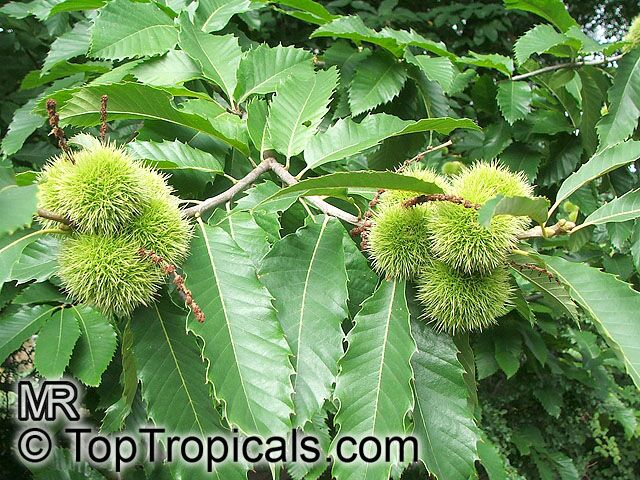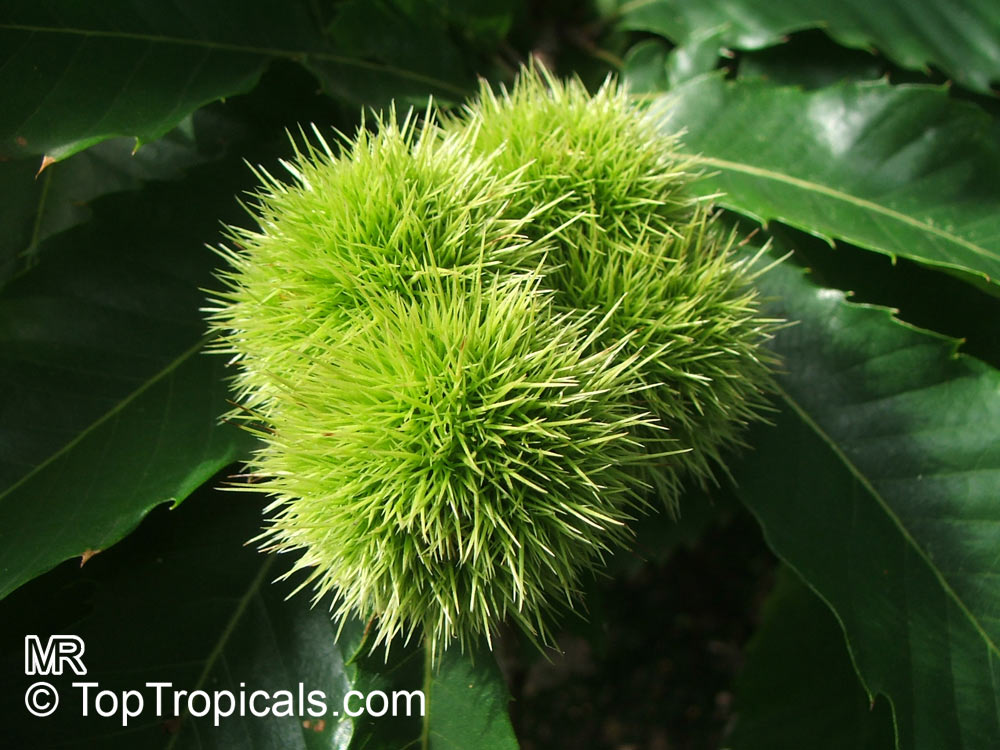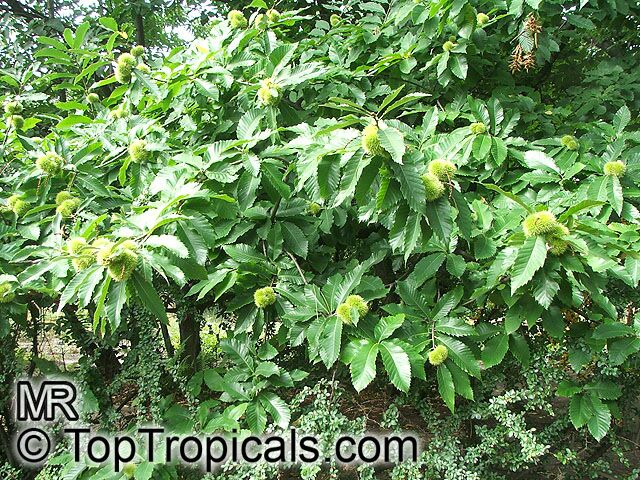Castanea sativa (Spanish Chestnut)
Top Tropicals Plant Encyclopedia
Botanical name: Castanea sativa
Common names: Spanish Chestnut, European Chestnut, Sweet Chestnut
Family: Fagaceae
Origin: Western Asia






Castanea sativa, or Spanish Chestnut, is a big tree that can grow taller than 20 feet. It is native to Western Asia and is grown in USDA Zone 5-9. Spanish Chestnut requires full sun or semi-shade and needs regular watering, with moderate watering when young. With the correct amount of water, it is drought tolerant.
The edible fruit of the Spanish Chestnut is an oval nut that is encased in a spiny, green husk. An average tree can produce up to 1,500 nuts per season, each containing high amounts of Vitamin C, B vitamins, and protein, as well as magnesium, copper, copper, and zinc. The sweet and nutty flavor of the chestnut makes it an excellent addition to many dishes. It can be boiled, roasted, ground into flour, or used in desserts and soups.
When growing the Spanish Chestnut in a pot, it should be placed in a sunny spot in cold regions. The pot should be large enough for the tree to receive enough nutrients and water. The soil should be kept slightly moist, but not soggy. Pruning should be done every three years to remove any dead or diseased branches. The chestnut needs to be fertilized regularly with a balanced fertilizer. With proper care, the tree can produce large amounts of fruit for many years.
